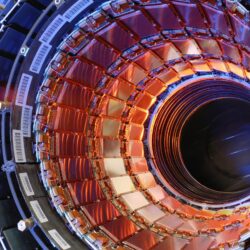
The history of space exploration encapsulates humanity’s enduring curiosity, boundless innovation, and unwavering determination. It’s a captivating odyssey that transitions from gazing at celestial bodies in sheer wonder to orchestrating intricate missions that reach the farthest corners of our solar system and beyond. In this extensive exploration, we will delve into the riveting saga of how humanity has continually aspired to touch the stars. Our narrative will pay particular attention to the indispensable role of technology, the tireless individuals propelling missions forward, and the continually evolving Solutions Architecture Service, the linchpin that makes all this cosmic adventure possible.
Chapter 1: Pioneering the Cosmos
The saga of cosmic exploration commenced eons before modern space agencies and sophisticated spacecraft. Distant stargazers such as Galileo Galilei and Johannes Kepler initiated this epic journey by unveiling the mysteries of the cosmos through telescopic observations. These luminaries ignited the imaginations of generations yet unborn, igniting a yearning to fathom the depths of the universe.
It’s imperative to acknowledge Konstantin Tsiolkovsky, a visionary Russian scientist often lauded as the progenitor of astronautics. Tsiolkovsky’s groundbreaking formulations, including the rocket equation and the concept of multi-stage rockets, laid the critical foundation for future space exploration. These visionary ideas precipitated the birth of the Solutions Architecture Service that serves as the nucleus for designing complex cosmic missions today.
Chapter 2: The Space Race Phenomenon
The mid-20th century heralded a pivotal epoch in space exploration, characterized as the Space Race. The United States and the Soviet Union engaged in a spirited competition, determined to showcase their technological prowess and assert ideological dominance. This intense rivalry propelled leaps and bounds in rocket technology and space science.
In 1957, the Soviet Union astounded the world with the launch of Sputnik 1, humanity’s inaugural artificial satellite. This monumental event ushered in the modern space age, leading to the establishment of national space agencies, with NASA at the forefront. The Solutions Architecture Service’s critical role during this epoch is evident, as it facilitated the intricate design of systems essential for catapulting humans beyond Earth’s gravitational embrace.
Chapter 3: Embarking on Human Spaceflight
April 12, 1961, is etched in history as the day Yuri Gagarin, a Soviet cosmonaut, became the inaugural human to venture into the boundless expanse of outer space aboard the Vostok 1 spacecraft. This historic feat flung open the gates of crewed space exploration. Shortly thereafter, American astronaut Alan Shepard joined the ranks as the first American to traverse the cosmos.
As human spaceflight began to gain traction, the Solutions Architecture Service underwent remarkable transformations. It played a pivotal role in crafting life-sustaining systems, spacecraft navigation protocols, and advanced communication networks, thereby safeguarding the astronauts on their celestial odysseys.
Chapter 4: Triumph on the Lunar Surface
The Apollo program, orchestrated by NASA, stands as an iconic pinnacle in the annals of space exploration. On July 20, 1969, the world watched in awe as the lunar module, Eagle, from Apollo 11 touched down gently on the lunar terrain. Neil Armstrong’s immortal words, “That’s one small step for [a] man, one giant leap for mankind,” resonated globally.
The triumphs of the Moon landings were the culmination of meticulous research, development, and precise planning. The Solutions Architecture Service proved to be an indispensable partner, orchestrating the intricate systems essential for lunar voyages, encompassing spacecraft navigation, lunar module descent, and safe ascent back to Earth.
Chapter 5: The Era of Space Shuttles
The 1980s ushered in a novel era of cosmic exploration with the advent of the Space Shuttle program. These reusable spacecraft, exemplified by the likes of the Space Shuttle Columbia and Challenger, revolutionized space travel. Regular missions into low Earth orbit became the norm, democratizing space access and enabling unparalleled scientific research.
During this epoch, the Solutions Architecture Service continued its evolution, adapting to the unique demands of the Space Shuttle program. It played a pivotal role in mission strategizing, seamless deployment of payloads, and ensuring the astronauts’ safety during their journeys to and from the cosmos.
Chapter 6: Uniting Globes in Space
As the chronicles of space exploration advanced, international collaboration took center stage. The International Space Station (ISS) epitomizes the potential of global cooperation. This celestial outpost serves as both a microgravity laboratory and a symbol of unity, transcending national borders in the pursuit of scientific enlightenment.
The Solutions Architecture Service metamorphosed further, facilitating fluid communication and coordination among an array of international partners. It masterminded the harmonious integration of multifarious spacecraft systems and protocols, allowing astronauts hailing from diverse nations to work in synergy and harmony.
Chapter 7: A New Cosmic Frontier
The 21st century heralds fresh challenges and vistas in space exploration. Private enterprises like SpaceX and Blue Origin have entered the cosmic arena, driving innovation and mitigating the costs associated with space access. Rovers like the Mars Curiosity rover have successfully graced the Martian surface, while distant asteroids are no longer beyond our reach.
The Solutions architecture service has adapted nimbly to this dynamic landscape, offering vital support to commercial endeavors and interplanetary expeditions alike. Its pivotal role in ensuring the triumph of missions to enigmatic destinations such as Mars, where both opportunities and obstacles loom large, underscores its enduring relevance.
Conclusion
The history of cosmic exploration is a testament to humanity’s indomitable spirit, boundless innovation, and unflagging pursuit of knowledge. From early visionaries to contemporary trailblazers, our expedition into the cosmos has been marked by ingeniousness, resolute tenacity, and the continually evolving Solutions Architecture Service. As we persist in pushing the boundaries of cosmic exploration, it is this service that will enable us to scale even greater heights, unlocking the profound mysteries of the universe. The cosmos beckons, and humanity, armed with the Solutions Architecture Service, stands poised to heed its call.
Last modified: 2023-09-27









